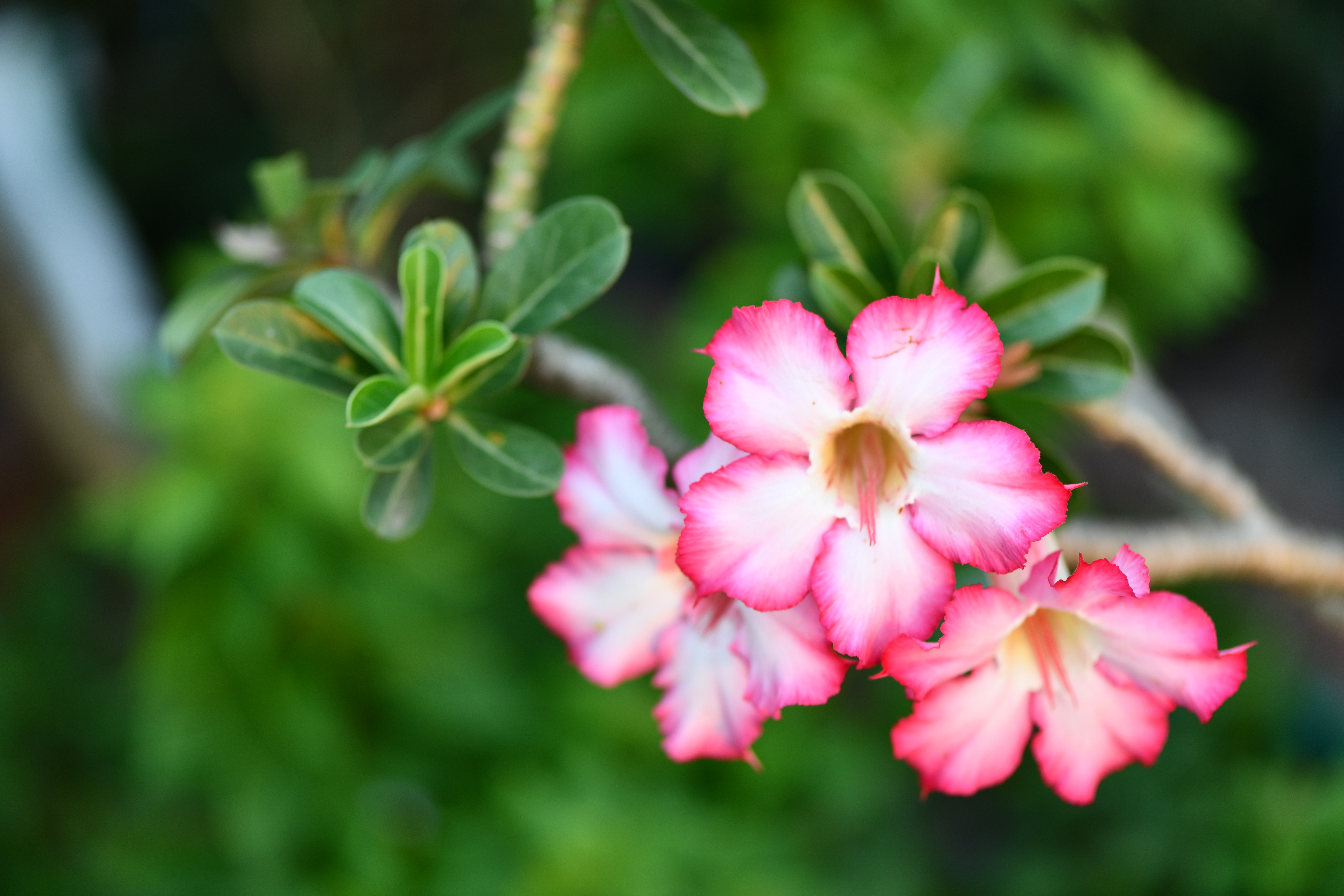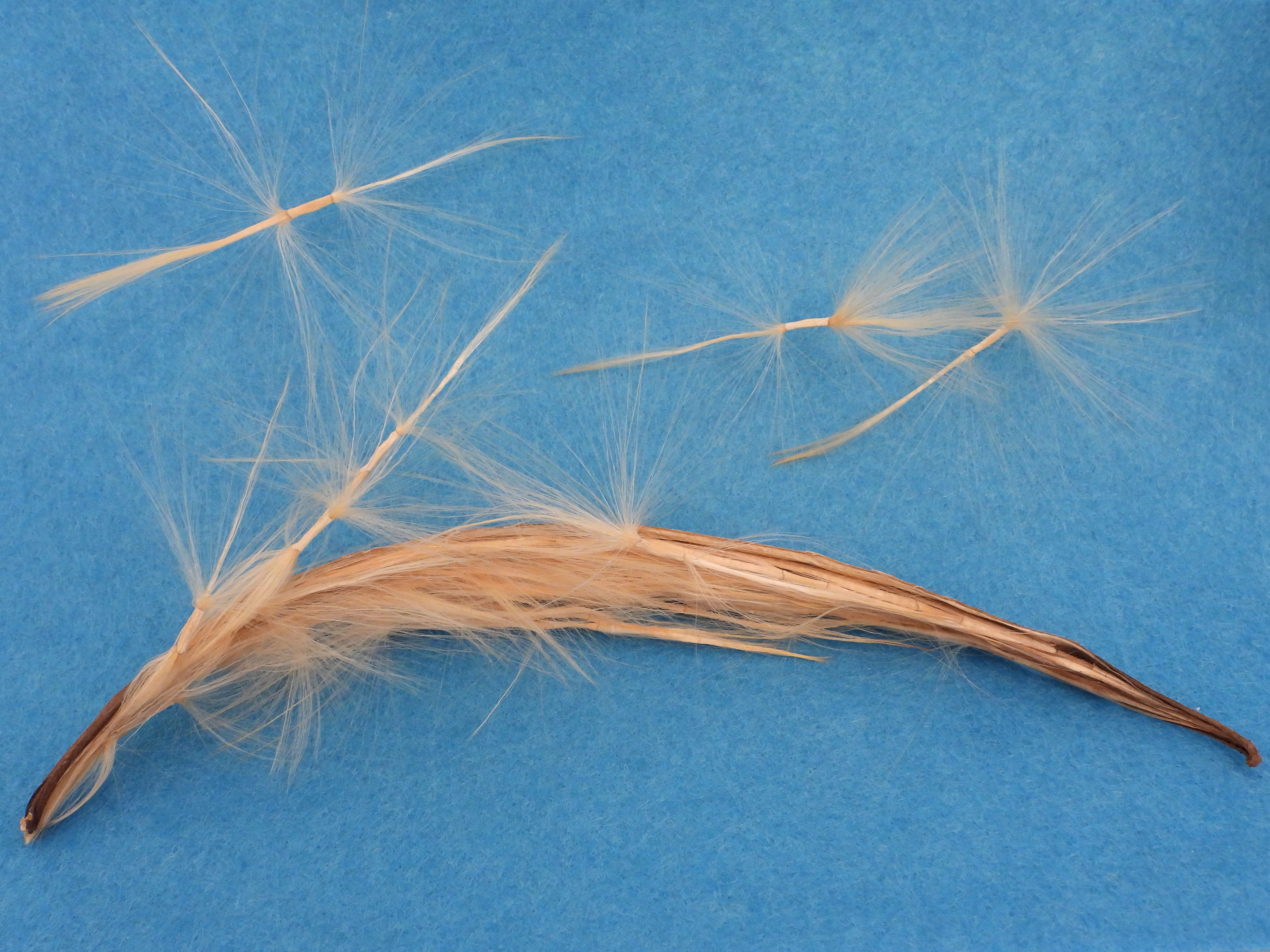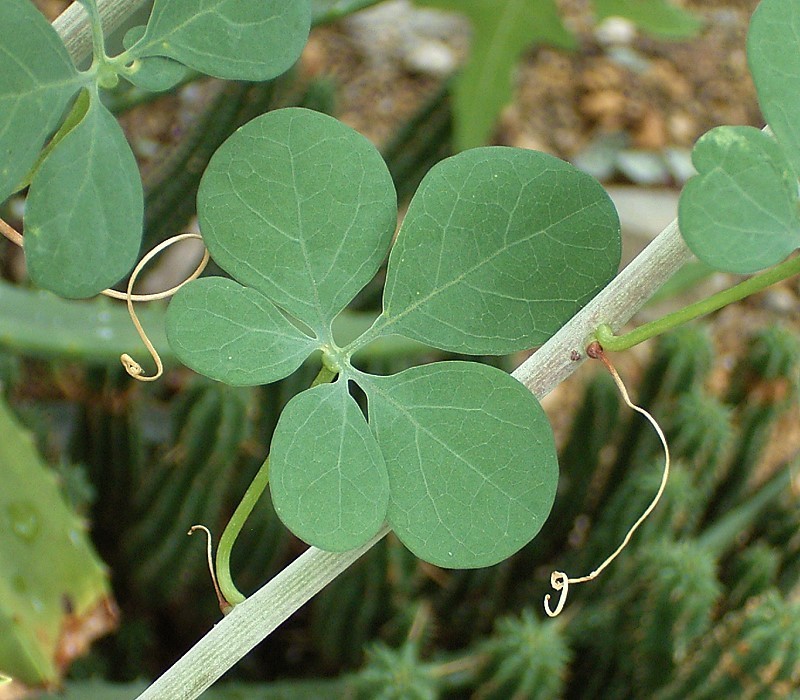|
Adenium
''Adenium'' is a genus of flowering plants in the family Apocynaceae first described as a genus in 1819. It is native to Africa and the Arabian Peninsula. Cultivation and uses ''Adenium obesum'' is grown as a houseplant in temperate and tropical regions. Numerous Hybrid (biology), hybrids have been developed. Adeniums are appreciated for their colorful flowers and unusual thick caudex, caudices. They can be grown for many years in a pot and are commonly used for bonsai. Because seed-grown plants are not genetically identical to the mother plant, Cultivar, desirable varieties are commonly propagated by grafting. Genetically identical plants can also be propagated by Cutting (plant), cutting. Cutting-grown plants do not tend to develop a desirable thick caudex as quickly as seed-grown plants. The sap of ''Adenium boehmianum'', ''Adenium multiflorum, A. multiflorum'', and ''Adenium obesum, A. obesum'' contains toxic cardiac glycosides and is used as arrow poison throughout Afric ... [...More Info...] [...Related Items...] OR: [Wikipedia] [Google] [Baidu] |
Adenium Obesum
''Adenium obesum'', more commonly known as a desert rose, is a poisonous species of flowering plant belonging to the tribe Nerieae of the subfamily Apocynoideae of the Apocynum, dogbane family, Apocynaceae. It is native plant, native to the Sahel regions south of the Sahara (from Mauritania and Senegal to Sudan), tropical and subtropical eastern and southern Africa, as well as the Arabian Peninsula. Other names for the flower include Sabi star, kudu, mock azalea, and impala lily. ''Adenium obesum'' is a popular houseplant and bonsai in temperateness, temperate regions. Description It is an evergreen or drought-deciduous Succulent plant, succulent shrub (which can also lose its leaves during cold spells, or according to the subspecies or cultivar). It can grow to in height, with pachycaul (disproportionately large) stems and a stout, swollen basal caudex (a rootstock that protrudes from the soil). The leaf, leaves are spirally arranged, clustered toward the tips of the shoots, s ... [...More Info...] [...Related Items...] OR: [Wikipedia] [Google] [Baidu] |
Adenium Multiflorum
''Adenium multiflorum'' is small, succulent tree native to central and eastern Southern Africa. It may be deciduous or evergreen, and is found in dry woods or grassland in its native habitat. It is typically 0.5–3 m tall. Like other succulent members of the family Apocynaceae, ''A. multiflorum'' has a milky latex with toxic alkaloids, specifically Cardiac glycosides. This latex is used as an arrow poison and as a fish stunning poison. The leaves are simple, with smooth edges, typically oppositely arranged. The flowers, which appear in winter, are typically 5-petaled and may be red, pink, white, or bi-color. The two-capsuled fruits contain long, grooved, hairy brown seeds. Sometimes called the impala lily, ''A. multiflorum'' requires full sun and excellent drainage. It is extremely drought tolerant, but susceptible to the tobacco whitefly. Though frequently used as a bonsai plant indoors, it may be grown outside in USDA hardiness zones 10 and 11. It is sometimes treated a ... [...More Info...] [...Related Items...] OR: [Wikipedia] [Google] [Baidu] |
Apocynaceae
Apocynaceae (, from '' Apocynum'', Greek for "dog-away") is a family of flowering plants that includes trees, shrubs, herbs, stem succulents, and vines, commonly known as the dogbane family, because some taxa were used as dog poison. Notable members of the family include oleander, dogbanes, milkweeds, and periwinkles. The family is native to the European, Asian, African, Australian, and American tropics or subtropics, with some temperate members as well. The former family Asclepiadaceae (now known as Asclepiadoideae) is considered a subfamily of Apocynaceae and contains 348 genera. A list of Apocynaceae genera may be found here. Many species are tall trees found in tropical forests, but some grow in tropical dry ( xeric) environments. Also perennial herbs from temperate zones occur. Many of these plants have milky latex, and many species are poisonous if ingested, the family being rich in genera containing alkaloids and cardiac glycosides, those containing the latter oft ... [...More Info...] [...Related Items...] OR: [Wikipedia] [Google] [Baidu] |
Adenium Arabicum
''Adenium arabicum'' is a species of succulent plant commonly used for bonsai and cultivated for its shiny leaves, growth form and flowering characteristics. Common names include desert rose, elephant's foot, and Adanah bush. They are monoecious and self-sterile. ''A. arabicum'' is native to Yemen and Saudi Arabia. The leaves of this species have a broad surface. Leaves also tend to be large and somewhat leathery in appearance. Growth form is squat and fat, with a definite caudex and without much differentiation between trunk and branches. Bark may appear a purplish to dark brown color. Flowers Flowers, also known as blooms and blossoms, are the reproductive structures of flowering plants ( angiosperms). Typically, they are structured in four circular levels, called whorls, around the end of a stalk. These whorls include: calyx, m ... range from pink to reddish pink. They are tubular, often appear for 2-3 days, and may appear before the leaves. ''A. arabicum'' prefers fu ... [...More Info...] [...Related Items...] OR: [Wikipedia] [Google] [Baidu] |
Adenium Boehmianum
''Adenium boehmianum'', the Bushman poison, is a poisonous succulent endemic to the mostly dry regions of northern Namibia and southern Angola. The San people boil the root sap and latex to prepare arrow poison Arrow poisons are used to poison arrow heads or darts for the purposes of hunting and warfare. They have been used by indigenous peoples worldwide and are still in use in areas of South America, Africa and Asia. Notable examples are the poisons se ..., which is sufficient for hunting large mammals, as it contains strong cardiotoxic effects. The leaves, borne only for three months a year, are arranged spirally and are clustered near the branch tips. A plant will flower for only a few weeks in winter. The oblong fruit releases many seeds through a longitudinal slit, which due to their lateral tufts, can be dispersed by wind. See also * Bushman poison (other) References Flora of Namibia Flora of Angola boehmianum Caudiciform plants {{Apocynaceae-stu ... [...More Info...] [...Related Items...] OR: [Wikipedia] [Google] [Baidu] |
Adenia
''Adenia'' is a genus of flowering plants in the passionflower family Passifloraceae. It is distributed in the Old World tropics and subtropics.''Adenia''. Flora of China. The centers of diversity are in Madagascar, eastern and western tropical Africa, and Southeast Asia. The genus name ''Adenia'' comes from "aden", reported as the Arabic name for the plant by , the author of the genus. Description All ''Adenia'' are |
Grafting
Grafting or graftage is a horticulture, horticultural technique whereby tissues of plants are joined so as to continue their growth together. The upper part of the combined plant is called the scion () while the lower part is called the rootstock. The success of this joining requires that the vascular tissues grow together. The natural equivalent of this process is inosculation. The technique is most commonly used in asexual reproduction, asexual plant propagation, propagation of commercially grown plants for the horticultural and agricultural trades. The scion is typically joined to the rootstock at the soil line; however, top work grafting may occur far above this line, leaving an understock consisting of the lower part of the trunk and the root system. In most cases, the stock or rootstock is selected for its roots and the scion is selected for its Plant stem, stems, Leaf, leaves, flowers, or fruits. The scion contains the desired genes to be duplicated in future production ... [...More Info...] [...Related Items...] OR: [Wikipedia] [Google] [Baidu] |
Zambia
Zambia, officially the Republic of Zambia, is a landlocked country at the crossroads of Central Africa, Central, Southern Africa, Southern and East Africa. It is typically referred to being in South-Central Africa or Southern Africa. It is bordered to the north by the Democratic Republic of the Congo, Tanzania to the north-east, Malawi to the east, Mozambique to the southeast, Zimbabwe and Botswana to the south, Namibia to the southwest, and Angola to the west. The capital city of Zambia is Lusaka, located in the south-central part of Zambia. The population is concentrated mainly around Lusaka in the south and the Copperbelt Province to the north, the core economic hubs of the country. Originally inhabited by Khoisan peoples, the region was affected by the Bantu expansion of the thirteenth century. Following European colonization of Africa, European colonisers in the 18th century, the British colonised the region into the British protectorates of Barotziland–North-Western Rho ... [...More Info...] [...Related Items...] OR: [Wikipedia] [Google] [Baidu] |
Johann Friedrich Klotzsch
Johann Friedrich Klotzsch (9 June 1805 – 5 November 1860) was a German pharmacist and botanist. His principal work was in the field of mycology, with the study and description of many species of mushroom. Klotzsch was born in Wittenberg. Originally trained as a pharmacist, he later enrolled in pharmaceutical and botanical studies in Berlin. In 1830–32 he was curator of William Jackson Hooker's herbarium at the University of Glasgow. Beginning in 1834 he collected plants in Saxony, Bohemia, Austria, Styria and possibly Hungary. In 1838 he replaced Adelbert von Chamisso (1781–1838) as curator and director of the Royal Herbarium in Berlin. The plant genus '' Klotzschia'' from the family Apiaceae, and some plant species like '' Eugenia klotzschiana'' or '' Acianthera klotzschiana'' are named in his honour. Selected works *''Mykologische Berichtigungen zu der nachgelassenen Sowerbyschen Sammlung, so wie zu den wenigen in Linneschen Herbarium vorhandenen Pilzen nebst Aufstellun ... [...More Info...] [...Related Items...] OR: [Wikipedia] [Google] [Baidu] |
Angola
Angola, officially the Republic of Angola, is a country on the west-Central Africa, central coast of Southern Africa. It is the second-largest Portuguese-speaking world, Portuguese-speaking (Lusophone) country in both total area and List of countries and dependencies by population, population and is the List of African countries by area, seventh-largest country in Africa. It is bordered by Namibia to the south, the Democratic Republic of the Congo to the north, Zambia to the east, and the Atlantic Ocean to the west. Angola has an Enclave and exclave, exclave province, the province of Cabinda Province, Cabinda, that borders the Republic of the Congo and the Democratic Republic of the Congo. The capital and most populous city is Luanda. Angola has been inhabited since the Paleolithic, Paleolithic Age. After the Bantu expansion reached the region, states were formed by the 13th century and organised into confederations. The Kingdom of Kongo ascended to achieve hegemony among the ... [...More Info...] [...Related Items...] OR: [Wikipedia] [Google] [Baidu] |
Namibia
Namibia, officially the Republic of Namibia, is a country on the west coast of Southern Africa. Its borders include the Atlantic Ocean to the west, Angola and Zambia to the north, Botswana to the east and South Africa to the south; in the northeast, approximating a quadripoint, Zimbabwe lies less than 200 metres (660 feet) away along the Zambezi, Zambezi River near Kazungula, Zambia. Namibia's capital and largest city is Windhoek. Namibia is the driest country in sub-Saharan Africa, and has been inhabited since prehistoric times by the Khoekhoe, Khoi, San people, San, Damara people, Damara and Nama people. Around the 14th century, immigration, immigrating Bantu peoples arrived as part of the Bantu expansion. From 1600 the Ovambo people#History, Ovambo formed kingdoms, such as Ondonga and Oukwanyama. In 1884, the German Empire established rule over most of the territory, forming a colony known as German South West Africa. Between 1904 and 1908, German troops waged a punitive ... [...More Info...] [...Related Items...] OR: [Wikipedia] [Google] [Baidu] |
Isaac Bayley Balfour
Sir Isaac Bayley Balfour, Knight Commander of the Order of the British Empire, KBE, Fellow of the Royal Society, FRS, Fellow of the Royal Society of Edinburgh, FRSE (31 March 1853 – 30 November 1922) was a Scottish botanist. He was Regius Professor of Botany (Glasgow), Regius Professor of Botany at the University of Glasgow from 1879 to 1885, Sherardian Professor of Botany at the University of Oxford from 1884 to 1888, and Professor of Botany at the University of Edinburgh from 1888 to 1922. Early life He was the son of John Hutton Balfour, also a botanist, and Marion Spottiswood Bayley, and was born at home, 27 Inverleith Row, Edinburgh. His mother was granddaughter of George Husband Baird. He was the cousin of Sir James Crichton-Browne. Biography Balfour was educated at the Edinburgh Academy from 1864 to 1870. At this early stage his interests and abilities were in the biological sciences, which were taught to him by his father. Due to his father's post as Professor of Bota ... [...More Info...] [...Related Items...] OR: [Wikipedia] [Google] [Baidu] |



